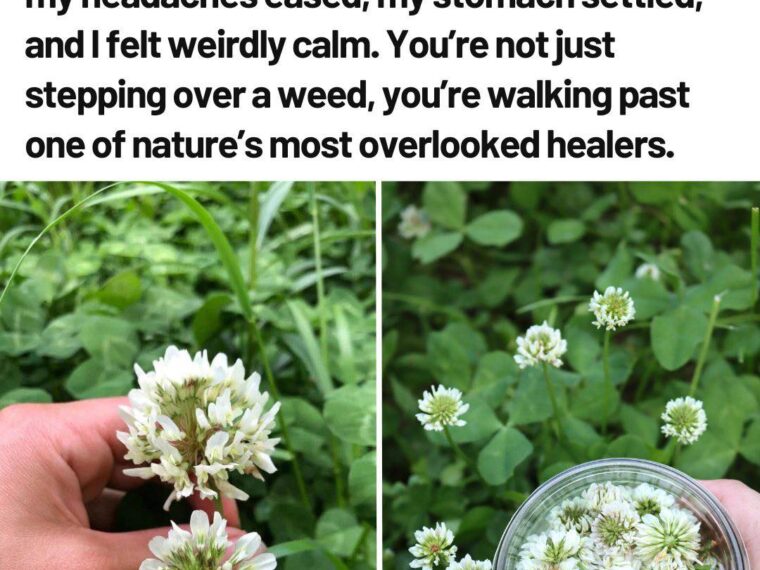White clover is incredibly versatile. Here are easy, practical ways to make use of it:
1. White Clover Tea
Supports detox, immune health, and lung function.
Ingredients:
- 1 tbsp dried flowers (or 2 tbsp fresh)
- 1 cup hot water
Instructions:
Steep for 10–15 minutes. Add honey, lemon, or mint if desired.
Drink up to 2 cups per day.
2. Healing Clover Salve
Great for cuts, scrapes, bites, or dry skin.
You’ll Need:
- 1 cup dried white clover
- 1 cup carrier oil (olive, coconut, or almond)
- Beeswax (to thicken)
Instructions:
- Infuse the clover in oil over low heat for 2–3 hours.
- Strain and combine with melted beeswax.
- Pour into tins, let cool.
- Apply to skin as needed.
3. Soothing Poultice
Mash fresh leaves into a paste and apply directly to the skin for minor irritations.
4. White Clover Tincture
Used for coughs and immunity.
How to Make It:
- Fill a glass jar with fresh clover flowers.
- Cover with 80-proof vodka or brandy.
- Let sit in a dark place for 4–6 weeks, shaking occasionally.
- Strain and store in dropper bottles.
- Use 10–20 drops diluted in water.
5. Infused Herbal Honey
Soothing and delicious.
How to Make It:
- Add dried flowers to raw honey.
- Let sit for 1–2 weeks.
- Strain (or not!).
Perfect for sore throats or adding to tea.
🌼 How to Forage White Clover Safely
White clover is common and easy to harvest, but be mindful of where you pick it.
Where It Grows:
- Lawns and backyards
- Open fields and pastures
- Sunny forest edges
- Along trails (away from roads)
Best Harvest Times:
- Leaves: Spring through fall (young leaves taste best)
- Flowers: Late spring to early fall when fully bloomed
Foraging Tips:
- Avoid treated lawns or roadside patches (pesticides, pollution)
- Harvest responsibly: Don’t overpick from a single patch
- Rinse thoroughly before use
⚠️ Safety and Precautions
White clover is generally safe, but here are a few things to keep in mind:
1. Allergies
Some people may be allergic, especially those sensitive to legumes or flowering plants.
2. Blood Thinning
Contains coumarins—may thin blood. Avoid if you take blood thinners like warfarin.
3. Hormonal Effects
Contains plant estrogens (isoflavones). Caution advised if pregnant, nursing, or with hormone-sensitive conditions.
4. Avoid Spoiled Clover
Never use moldy or fermented clover—it can contain dicoumarol, a dangerous natural blood thinner.
5. Talk to Your Doctor
If you’re managing a medical condition or on medication, consult a healthcare provider before regular use.
🌸 White Clover vs. Red Clover: Quick Comparison
| Feature | White Clover (T. repens) | Red Clover (T. pratense) |
|---|---|---|
| Flower Color | White or pink-tinged | Purple-pink |
| Growth Habit | Low and creeping | Tall and upright |
| Medicinal Use | Mild and gentle | Stronger, hormone-affecting |
| Culinary Use | More edible raw | Common in teas and infusions |
| Leaf Pattern | Crescent-marked trifoliate | Similar trifoliate leaves |
Final Thoughts
White clover may seem like just another backyard weed, but it’s actually a healing herb, wild edible, and soil-building superstar all in one.
Whether you’re a forager, herbal remedy enthusiast, or eco-conscious gardener, white clover is worth keeping around. It’s free, abundant, easy to identify, and incredibly useful—from your tea cup to your garden beds.
So next time you see it growing underfoot, think twice before mowing it down. You might just be stepping on one of the most versatile plants in nature’s pharmacy.





